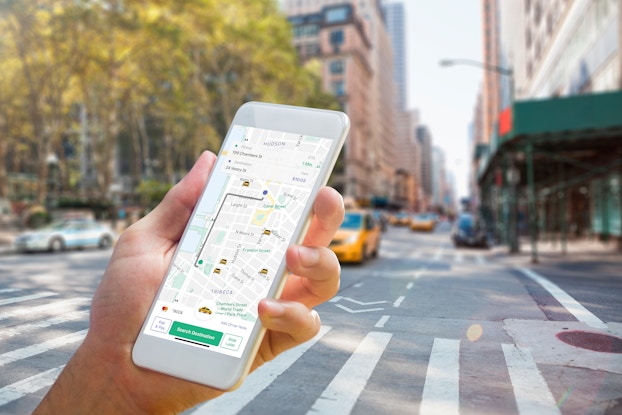
How Curb became a multimillion-dollar ride-hailing app:
- Curb is helping a legacy industry take on digital disruptors in the $85.8 billion global ridesharing industry by focusing intently on the needs of those being disrupted — traditional taxicab drivers.
- The app is continually enhancing its technology in a bid to nullify the perceived advantages that its ride-hailing competitors have exploited.
- Curb has been able to leverage its existing technological relationships with taxicab operators to gain their trust and facilitate adoption. As a result, the app’s active users have grown more than 300% in the past 12 months, with more than 100,000 drivers on the platform today.
The battle for customers between Uber and Lyft in the ride-service space has pummeled the traditional taxicab industry, attracting millions of rides away from legacy hired-car services by leveraging their sleek mobile technology.
Curb is seeking to level the playing field. The company, which got its start equipping New York City taxis with credit card processing devices, has expanded into the app-based ride-hailing market with a mobile solution of its own for traditional taxis and other ride services.
The ridesharing industry, in which individuals use their own cars to transport people from place to place, is dominated by Uber and Lyft. Global volume is estimated at $85.8 billion, almost exclusively tallied by those two companies.
By focusing intently on the needs of drivers and enhancing its technological capabilities to negate the advantages of its competitors, Curb is growing to become a force in the app-base ride-for-hire market that these services have disrupted, however.
The service has been gaining traction in markets around the country: Its number of active users has grown more than 300% in the past 12 months, with more than 100,000 drivers on the platform.
“I think because we have been such a strong advocate for, and believer in, the taxi industry and have been providing them with services, they have trusted us over the years,” Jason Gross, Vice President and Head of Mobile at Curb, told CO—.
Still, Curb has its work cut out for it, as ride-hailing apps like Uber and Lyft have siphoned market share from the taxi industry over the last decade, imperiling the livelihoods of cab drivers globally.
[Read: Why Brands Are Investing in Digital Out-of-Home Advertising to Drive Business]
By focusing intently on the needs of drivers and enhancing its technological capabilities to negate the advantages of its competitors, Curb is growing to become a force in the app-base ride-for-hire market that these services have disrupted.
Curb: Led by a founder with taxi-industry roots and a pro-driver ethos
Curb’s founder and CEO, Amos Tamam, led the development of the first credit card taxi meter, the Metrometer 21R, in 1992. His company, then called TaxiTronic, merged with Verifone in 2007, and acquired Curb, which had recently changed its name from Taxi Magic, in 2015.
TaxiTronic had already rolled out some app-based services by that time, but the acquisition of Curb provided a springboard for growth. The two apps had complementary geographies and technological capabilities, Gross said, which gave Curb a coast-to-coast presence and brought together the companies’ respective expertise in payment systems, dispatch algorithms (which matches trip requests to available drivers via data) and back-end connectivity with local dispatch services.
Fintech firm Verifone spun off the operations that were then known as Verifone Transportation Services in 2018, and the management and investors rebranded the entire new entity under the Curb name.
The company has continued to innovate, focusing on finding solutions that are in the best interest of taxi drivers, Gross said.
Its latest developments include upfront pricing, a feature that has long differentiated the major ride-hailing apps. The feature, appreciated by riders who know the full cost upfront, as opposed to waiting for the taxi meter to calculate their fare, is also a benefit to drivers, he said.
“When they accept the job, they know in advance exactly what they're getting into,” said Gross. “That level of transparency that we bring to both the drivers and the passengers has been a big hit with both of them.”
[Read: Marketers from Kellogg to Walmart Optimize QR Codes to Drive Consumer Engagement and Sales]
Differentiating from Uber and Lyft by paying drivers more and charging riders less
Gross said Curb calculates the fare for the driver, then adds a small upcharge to the customer, which Curb retains as its service fee. Customers can also tip the driver through the app. Gross said the company offers lower fares than Uber and Lyft, while allowing its drivers to retain more of the payment.
It helps that the company has relatively low acquisition costs for drivers — it can recruit entire fleets of cabs as it enters new markets — and that it has well-established technological connectivity with the industry.
Curb’s intuitive interface, which drivers interact with via an Android screen on their dashboard that replaces their meter, allows them to easily toggle back and forth between traditional street-hailed rides and rides booked through the app.
In addition to traditional taxicab fleets, Curb has also proven to be a good fit for other hired car services, such as livery cabs and independent cab owners, Gross said.

Partnering with Uber and marketing to corporate, government accounts to drive growth
The app has also embarked on a frenemy-style collaboration to spark growth. In March Curb unveiled a partnership with Uber that allows Uber users to hail cabs through Curb as well, which promises to greatly expand the potential customer base for the Curb service and generate more revenues for cab drivers, Tamam said in an interview with CNBC.
“I think this will bring another layer of demand for the industry,” he said.
Curb has marketed its product through a variety of media, including in the cabs themselves on video screens, on taxi-rooftop displays, and other areas where users are likely to take notice.
The company is also marketing to corporate and government accounts, such as offices and healthcare facilities.
“Being able to tap into the unified supply of taxis is wonderful for people who need transportation,” said Gross. “And because we're really a driver-first company, we're always protecting their interest and making certain that they're getting fair pay and that they're putting the best product forward, and that really helps to maintain the health of the overall taxi industry.”
CO— aims to bring you inspiration from leading respected experts. However, before making any business decision, you should consult a professional who can advise you based on your individual situation.
Follow us on Instagram for more expert tips & business owners’ stories.
CO—is committed to helping you start, run and grow your small business. Learn more about the benefits of small business membership in the U.S. Chamber of Commerce, here.
CO— Exclusives: Insider Strategies
How the buzziest brands and hottest startups are solving today's biggest business challenges. CO— brings you advice from startup founders and top executives for thriving in a new world.







